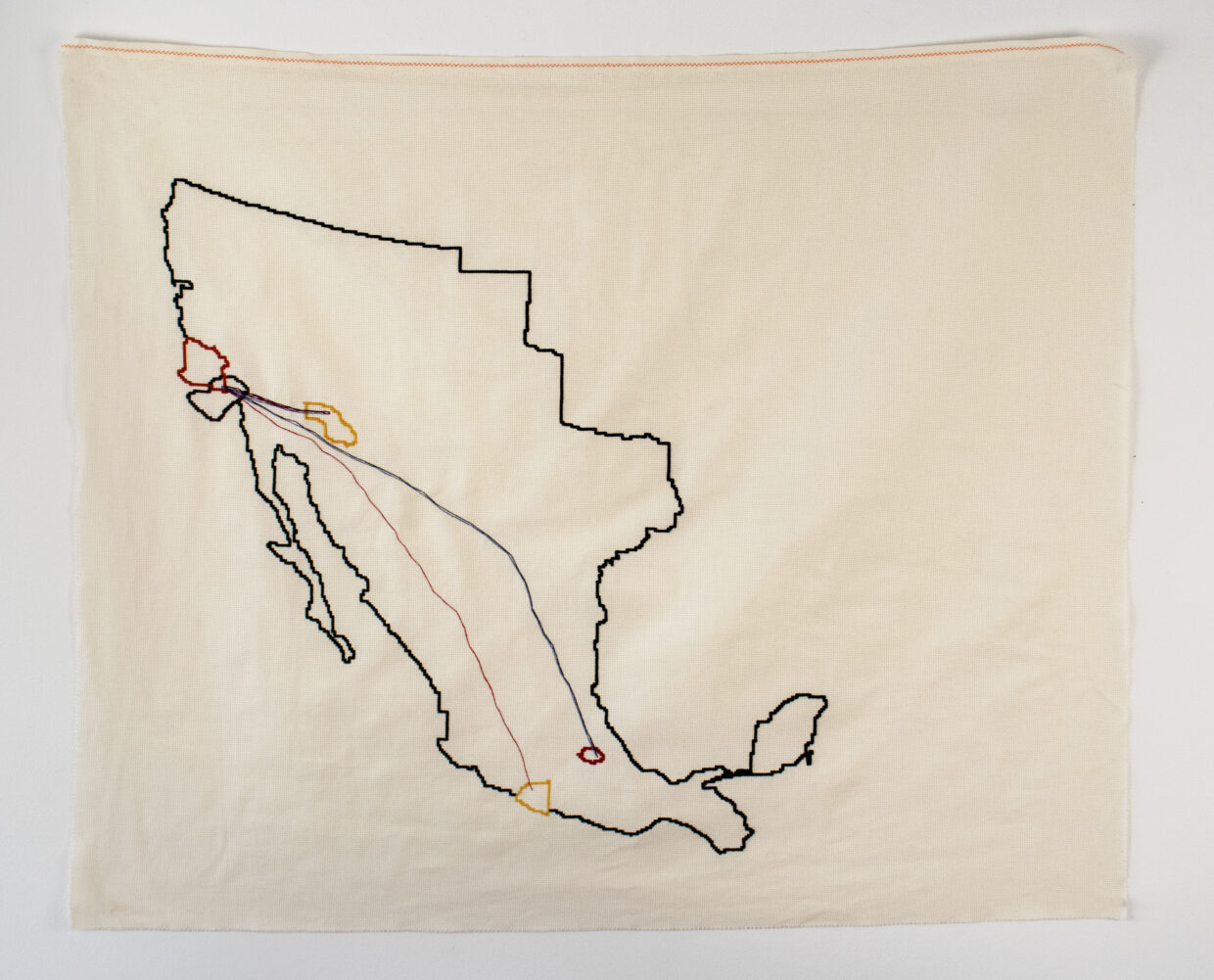Hello! My name is Stephaney Perez, and I am a senior at the time of writing this post. I grew up in the Southwest, specifically in Arizona. I am also the daughter of immigrant parents from Mexico. For this project, I want to make something that reflects my family’s experiences to explore the idea of the personal being political.
Growing up with immigrant parents was difficult since my family was mixed-status, and it felt that something could happen at any moment. As a child, I found it weird that Arizona’s government was hostile to the community in a state with a high population of Latines (undocumented and US citizens). I wanted to use this space, LAS 310, to create something that resisted how Arizona’s education system did not explore how Arizona became part of the US. Drawing on Paulo Freire’s book, Pedagogy of the Oppressed, I created an embroidered outline of what Mexico looked like before the Mexican-American War to show my resistance to Arizona shutting down voices from the Latine community on how it gained more land and wealth than it already had. I took inspiration from the map Rodolfo Acuña (1981) uses in his book Occupied America, A History of Chicanos. Additionally, I chose embroidery because I wanted to create something that did not require knowing English or Spanish since embroidery is more of a visual medium. That way, I could reach a larger audience and bypass the language barrier. As authors, Kathryn R. King (1995) and Jharna Choudhury (2022) write in their respective articles (Of Needles and Pens and Women’s Work and Telling Trauma: Resisting through Embroidery Stories), embroidery can be complementary to writing. Additionally, Choudhury asserts that crafting is a way to preserve memories and could be used to describe experiences that words may not express. This means that embroidery can be subversive and bring into conservation issues related to social justice.
To make this project personal to my family, I included lines demonstrating where my parents immigrated and where we live now. However, I also wanted to consider how Mexico and the US were built on Indigenous land and peoples. For this reason, I included outlines of territories that belonged to Indigenous communities in the cities my family lived. For example, my family lived in Los Angeles (LA). So I stitched the outline of the territories of the Chumash and the Kizh, Indigenous peoples who lived in what is currently LA before European colonization. It is to show that the conflict between Mexico and the US did not only impact the dominant groups in both countries but also the people dealing with the impacts of colonization. I sought out websites and resources run by the Indigenous communities. I also consulted my family living in Mexico on the Indigenous history of their home states. However, not everyone I reached out to contacted me back. Nevertheless, I appreciate the resources these communities set up, where I learned about the histories of the people whose land my family inhabited.
I would also like to thank my professor, Michelle Joffroy, for her support and pointers on where to seek information. I would also like to thank my LAS 310 classmates for hearing out my ideas and helping me refine my approach. Last but not least, I thank my family, in Mexico and the US, for helping me understand our history and their stories of resistance. I consider them my most significant collaborators and dedicate this project to them.
I named this project “siempre perteneciste aquí,” meaning “you’ve always belonged here.” It is in Spanish since everyone in my family speaks Spanish. Because this project is dedicated to them, I wanted to tell them, in their native language, that they were right when they said that the border was redrawn to separate people. For this reason, I will be giving this embroidery project to my parents.
